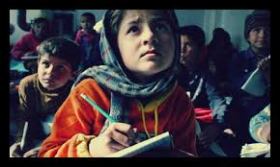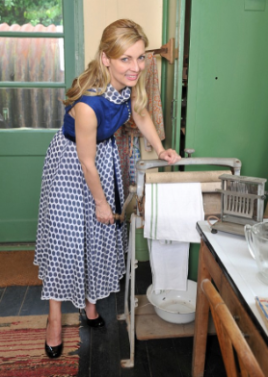 In both of the short stories, “No Sweetness Here” and “Everyday Use” the conflicting views of staying true to your culture and moving forward with your success are evident through the lives of the women. Both authors offer the idea that womanhood consists of caring for your child and providing them with a life betterthan your own, while also demonstrating the idea that a woman should be able create a successful life for herself. Both authors depict that these two conflicting views come with a cost that determines a woman’s quality of life.
In both of the short stories, “No Sweetness Here” and “Everyday Use” the conflicting views of staying true to your culture and moving forward with your success are evident through the lives of the women. Both authors offer the idea that womanhood consists of caring for your child and providing them with a life betterthan your own, while also demonstrating the idea that a woman should be able create a successful life for herself. Both authors depict that these two conflicting views come with a cost that determines a woman’s quality of life.
In “ No Sweetness Here” by Ama Ata Aidoo the life portrayed by Maami Ama represents one of a woman where all she has is her child. She demonstrates a woman that is an extremely hard worker and provides for her child. At the cost of providing her son Maami Ama stays within the horizons of what her village has to offer her. She is not a woman who is trying to expand her life to places where she can reach success. During a conversation with Chicha, Maami Ama states “ Chicha, I shall willingly submit to your canes if he gets his sums wrong “ (Aidoo 56). She will go as far as taking her sons punishments in order to keep him safe. This is a lifestyle she has chosen herself as a woman. Culturally her child’s life means more to her than her own life and will do anything at any cost to keep him safe.
Mama in “Everyday Use” by Alice Walker is a woman like Maami Ama who has chosen to work very hard in order to be a good mother. She describes herself as a “ large, big-boned woman with rough, man-working hands” (Walker 86), she is clearly not afraid of work. Mama and her daughter Maggie have chosen a life style where they are true to their ancestors and the culture that has raised them, whereas her second daughter Dee is depicted as a woman who has chose to stray away from this lifestyle in order to create a better one. The cost of losing culture and value is seen through the name change Dee has given herself. She goes from being called “Dee”, full of value and “named after [her] aunt Dicie” (Walker 88), to “Wanergo Lee-wanika Kemanjo”. While Dee has chosen the lifestyle of success at the cost of her culture, her sister Maggie demonstrates the complete opposite decision. Where she has been living with her mother and the value of their culture allowing her to understand the value of the quilts wanted so badly by Wangero, but will never be able “to make something outof [herself]” (Walker 91), according to her sister.
There is no right or wrong decision when a woman chooses a specific life to live, like the women in both of the stories. Even though both authors depict the two conflicting life styles that are achieved through certain costs, each woman chose one knowing what they were doing. Mama and Maggie both chose to live with their culture while Dee chose to leave it behind her precede success. Maami Ama chose to live for her son and leave behind her own life at the cost of losing it all in the end. Women have this freedom and it is up to them to choose how they want live at whatever cost it may be.





